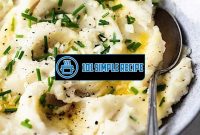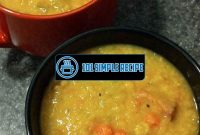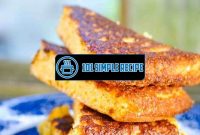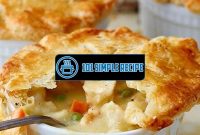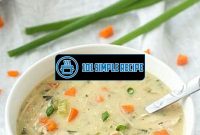If you’re craving a taste of the South, look no further than this irresistible Southern cornbread recipe. Not only is it incredibly delicious, but it also doesn’t require any buttermilk, making it a convenient option for those who may not have this ingredient on hand. Whether you’re a seasoned chef or a novice in the kitchen, you’ll be able to whip up a batch of this mouthwatering cornbread with ease. Just follow the simple steps below, and get ready to indulge in a slice of Southern comfort.

The Origins of Southern Cornbread
Southern cornbread has a rich history and cultural significance in American cuisine. It is a staple food that has been enjoyed for generations, with its origins dating back to Native American tribes.
Native American Influence on Southern Cornbread:
Native American tribes were the first to introduce corn to the southern region of the United States. They cultivated corn as a primary crop and used it to create various dishes, including cornbread. Native American cornbread was a simple mixture of cornmeal, water, and sometimes salt. They cooked it over an open fire or on hot rocks. This type of cornbread was dense and had a coarse texture.
When Europeans arrived in America, they embraced cornbread and began incorporating it into their own culinary traditions. They added ingredients such as eggs, milk, and fat to create a lighter and softer version of cornbread. It was during this time that buttermilk started being used in cornbread recipes, as it was readily available in southern households.
The Evolution of Southern Cornbread:
Over time, the recipe for southern cornbread evolved and varied depending on regional preferences and available ingredients. In the South, cornbread became a versatile accompaniment to meals and was often served alongside dishes such as collard greens, black-eyed peas, and fried chicken.
With the popularity of cornbread growing, different variations emerged. Some recipes called for the addition of sugar, resulting in a slightly sweet cornbread that paired well with honey or syrup. Others preferred a savory cornbread, omitting sugar and adding ingredients like bacon, onions, or cheese to enhance the flavor.
Furthermore, the method of cooking cornbread also changed. While traditional cornbread was cooked in a cast-iron skillet, modern ovens allowed for baking cornbread in pans of various shapes and sizes.
The Role of Cornbread in Southern Cuisine:
Cornbread plays a significant role in Southern cuisine, often serving as a symbol of comfort and tradition. It is a versatile side dish that can be enjoyed with breakfast, as a snack, or as an accompaniment to a hearty dinner.
In addition to its versatility, cornbread is a budget-friendly option that can easily feed a large number of people. It is frequently served at family gatherings, barbecues, and holiday celebrations. The humble cornbread has become a beloved tradition that brings people together around the dinner table.
In conclusion, the origins of southern cornbread can be traced back to Native American tribes who introduced corn as a staple crop. Over time, southern cornbread evolved, incorporating ingredients like buttermilk and adapting to regional preferences. Today, cornbread holds a special place in Southern cuisine, symbolizing comfort, tradition, and togetherness.
Traditional Southern Cornbread Recipes
When it comes to traditional southern cornbread recipes, buttermilk is a key ingredient that adds a unique tanginess and moisture to the bread. For generations, southern families have relied on this simple yet flavorful addition to create the perfect cornbread.
Buttermilk, which is the liquid left behind after churning butter, has long been a staple in southern cooking. Its acidity helps to activate the leavening agents in cornbread, resulting in a light and fluffy texture. Additionally, buttermilk adds a subtle tanginess that balances out the sweetness of the cornmeal.
The Importance of Buttermilk in Traditional Cornbread
To highlight the importance of buttermilk in traditional cornbread, let’s take a closer look at its role:
- Flavor Enhancement: Buttermilk brings a distinct flavor to cornbread, enhancing its overall taste. The slight tanginess adds depth and complexity to each bite.
- Moisture Retention: The acidity of buttermilk helps to retain moisture in the cornbread, keeping it from becoming dry and crumbly.
- Leavening Agent Activation: Buttermilk activates the leavening agents, such as baking soda or powder, ensuring the cornbread rises properly and has a light texture.
Variations of Buttermilk in Southern Cornbread
While traditional southern cornbread recipes typically call for cultured buttermilk, there are various variations that can be used. These variations cater to individual preferences, dietary restrictions, and ingredient availability.
Here are some popular variations of buttermilk in southern cornbread:
- Store-Bought Buttermilk: Many southern cooks rely on store-bought buttermilk, readily available in most grocery stores. It provides the same tangy flavor and ensures consistent results.
- Homemade Buttermilk Substitute: In case buttermilk is not easily accessible, a homemade substitute can be made by adding vinegar or lemon juice to regular milk. This mixture creates a similar acidity and can be used as a substitute.
- Yogurt or Sour Cream: Some variations of southern cornbread use yogurt or sour cream to achieve a similar tanginess and moisture retention.
Exploring Buttermilk Substitutes for Cornbread
For those who prefer to avoid buttermilk or have dietary restrictions, exploring alternative substitutes for buttermilk in cornbread is essential. These substitutes can maintain the desired flavor and texture of traditional southern cornbread while accommodating different dietary needs.
Consider the following buttermilk substitutes:
- Milk and Vinegar: Similar to the homemade buttermilk substitute mentioned earlier, combining vinegar or lemon juice with milk creates an acidic substitute that works well in cornbread recipes.
- Milk and Yogurt: Mixing yogurt and milk to create a thick liquid that mimics the consistency of buttermilk can yield satisfactory results.
- Non-Dairy Alternatives: Those who follow a dairy-free lifestyle can opt for non-dairy milk, such as almond milk or soy milk, combined with vinegar or lemon juice to create a suitable substitute for buttermilk.
Note: When substituting buttermilk in a cornbread recipe, it’s essential to maintain the proper acidity level and balance with other ingredients to achieve the desired taste and texture.
In conclusion, buttermilk serves a crucial role in traditional southern cornbread recipes. Its tanginess, moisture-retaining properties, and contribution to leavening agents make it a beloved ingredient. However, variations and substitutes allow for flexibility in the recipe while still capturing the essence of delicious southern cornbread.
Benefits of Using Buttermilk in Cornbread
When it comes to making southern cornbread, buttermilk has long been a staple ingredient. The addition of buttermilk brings numerous advantages to the table, enhancing both the taste and texture of this classic recipe. Let’s dive into the benefits of using buttermilk and discover why it is a vital component in creating delectable cornbread.
Moisture and Fluffiness: The Role of Buttermilk
One of the key reasons why buttermilk is favored in cornbread recipes is because it adds moisture and creates a light, fluffy texture. ✨
Buttermilk’s high water content helps to keep the cornbread moist, preventing it from drying out during the baking process. The moisture is evenly distributed throughout the batter, resulting in a tender crumb that practically melts in your mouth. This fluffy consistency is what sets southern cornbread apart from other varieties.
The acidity of buttermilk also plays a crucial role in the cornbread’s texture. The acid reacts with the baking soda or baking powder in the recipe, causing the batter to rise and resulting in a softer, fluffier end product.
Acidity and Leavening Agent in Buttermilk
Buttermilk’s acidity not only aids in achieving fluffiness but also serves as a natural leavening agent.
When combined with baking soda or baking powder, the acidity in buttermilk triggers a chemical reaction that produces carbon dioxide. This gas expands the batter, causing it to rise and create a light, airy texture in the finished cornbread.
It’s important to note that regular milk or other dairy substitutes lack the acidity needed to achieve the same leavening effect. This is why buttermilk is the preferred choice when it comes to making traditional southern cornbread.
Tangy Flavor Notes in Buttermilk Cornbread
In addition to enhancing the moisture and texture, buttermilk also imparts a delightful tangy flavor to the cornbread. ️
The tanginess of the buttermilk complements the natural sweetness of the cornmeal, resulting in a well-balanced and flavorful cornbread. The combination of these contrasting flavors creates a taste sensation that is both comforting and satisfying.
Whether served alongside a hearty bowl of chili or enjoyed on its own, the tangy flavor notes in buttermilk cornbread add an extra level of complexity that elevates this southern staple to new heights.
In conclusion, buttermilk brings a host of benefits to cornbread. From adding moisture and fluffiness to acting as a leavening agent and contributing a tangy flavor, buttermilk is a crucial ingredient in creating the perfect southern cornbread. So next time you whip up a batch of this beloved dish, be sure to include buttermilk for an unforgettable culinary experience. ✨
Buttermilk Alternatives in Southern Cornbread
When it comes to making delicious Southern cornbread, you may be surprised to learn that you don’t need buttermilk. There are actually several suitable alternatives that can yield equally tasty results. Whether you’re lactose intolerant or simply don’t have buttermilk on hand, these alternatives are worth exploring. In this article, we’ll explore three popular options: plain yogurt, sour cream, and a DIY buttermilk substitute using milk and lemon juice.
Plain Yogurt: A Creamy Option for Cornbread
If you’re looking for a creamy alternative to buttermilk in your cornbread recipe, plain yogurt is an excellent option. Not only does it add a rich texture, but it also lends a slightly tangy flavor that enhances the overall taste of the cornbread. To replace one cup of buttermilk, simply use one cup of plain yogurt. Note: Make sure to use plain yogurt without any added sugars or flavors for the best results.
When substituting plain yogurt for buttermilk, it’s important to adjust the recipe accordingly. Yogurt is thicker than buttermilk, so you may need to add a splash of milk to achieve the desired consistency. Additionally, you can also add a teaspoon of baking powder to ensure the cornbread rises properly.
Sour Cream: Adding Richness to Cornbread
Another fantastic alternative to buttermilk is sour cream. With its thick and creamy texture, sour cream adds a delightful richness to your cornbread, resulting in a moist and tender final product. To replace one cup of buttermilk, simply use one cup of sour cream. Note: Opt for full-fat sour cream for the best flavor and texture.
When using sour cream as a substitute, it’s important to consider its tangy taste. If you prefer a milder flavor, you can mix the sour cream with milk in a 1:1 ratio. This will help balance the tanginess while still providing the desired creaminess and moisture. Additionally, you can also add a pinch of baking soda to neutralize the acidity of the sour cream.
Milk and Lemon Juice: A DIY Buttermilk Substitute
If you don’t have any yogurt or sour cream available, you can easily make your own buttermilk substitute using milk and lemon juice. This combination creates a similar acidic environment that contributes to the tender texture and tangy taste of buttermilk. Simply mix one tablespoon of lemon juice with one cup of milk and let it sit for five minutes until it curdles. You can then use this mixture as a one-to-one replacement for buttermilk in your cornbread recipe. Note: Make sure to use fresh lemon juice and not bottled lemon juice for the best results.
When using the milk and lemon juice substitute, keep in mind that the acidity may impact the leavening agents in your recipe. To counteract this, you can add an extra pinch of baking powder or baking soda to ensure that your cornbread rises properly.
In conclusion, buttermilk is not the only option when it comes to making delicious Southern cornbread. Plain yogurt, sour cream, and a DIY buttermilk substitute using milk and lemon juice are all viable alternatives. Each alternative brings its own unique flavors and textures to the table, allowing you to customize your cornbread to your preferences. So, go ahead and give these alternatives a try and get ready to enjoy a mouthwatering batch of Southern cornbread without the need for buttermilk. Happy baking!
Trying New Approaches: Cornbread without Buttermilk
The southern cornbread is a classic dish that is loved by many for its delicious taste and comforting texture. Traditionally, buttermilk has been a key ingredient in making southern-style cornbread. However, if you find yourself without buttermilk in your pantry, fear not! There are several innovative approaches you can take to still achieve that perfect southern cornbread without using buttermilk.
Using Yogurt or Sour Cream as a Buttermilk Replacement
One popular alternative to buttermilk in cornbread recipes is using yogurt or sour cream. These dairy products not only add moisture but also lend a tangy flavor to the cornbread. To substitute buttermilk with yogurt or sour cream, simply use an equal amount of either ingredient. For example, if a recipe calls for 1 cup of buttermilk, you would use 1 cup of yogurt or sour cream instead.
Pro Tip: Greek yogurt works particularly well as a buttermilk replacement due to its thick and creamy texture. It adds richness to the cornbread and keeps it moist.
Experimenting with Creamed Corn and Vegetable Purees
Another exciting way to make cornbread without buttermilk is by incorporating creamed corn or vegetable purees into the batter. Creamed corn adds a delightful sweetness and moisture to the cornbread, making it even more irresistible. Simply mix a can of creamed corn into the cornbread batter before baking.
If you prefer a healthier twist, you can puree vegetables like carrots, zucchini, or sweet potatoes and add them to the cornbread batter. Not only do these purees enhance the nutritional value, but they also bring a subtle flavor and moistness to the cornbread.
Fun Fact: Adding vegetable purees to cornbread is an excellent way to sneak in some extra nutrients for picky eaters!
Infusing Flavors with Herbs, Spices, and Cheeses
If you’re looking to elevate the flavor profile of your cornbread without buttermilk, try infusing it with herbs, spices, and cheeses. The possibilities are endless when it comes to experimenting with different flavors.
You can add chopped fresh herbs such as rosemary, thyme, or chives to the cornbread batter to give it an aromatic touch. Spices like paprika, cayenne pepper, or garlic powder can also add a pleasant kick of heat and depth of flavor.
Furthermore, incorporating cheese into your cornbread can add a delightful creaminess and enhance the overall taste. Cheddar, Monterey Jack, or even Parmesan are great cheese choices to complement the cornbread.
️ Expert Tip: For a spicy twist, try adding chopped jalapenos or a sprinkle of cayenne pepper to your cornbread batter. It will give it an extra kick that spice lovers will adore!
In conclusion, making southern-style cornbread without buttermilk is entirely possible, thanks to the creative alternatives mentioned above. Whether you choose to use yogurt or sour cream, creamed corn or vegetable purees, or experiment with herbs, spices, and cheeses, you can still achieve a delicious cornbread that captures the essence of the South. So go ahead, get into the kitchen, and let your culinary creativity shine!
Frequently Asked Questions
Here are some frequently asked questions about this southern cornbread recipe without buttermilk:
| No. | Questions | Answers |
|---|---|---|
| 1. | Can I substitute regular milk for buttermilk in this recipe? | Yes, you can substitute regular milk for buttermilk in this recipe. Simply add 1 tablespoon of white vinegar or lemon juice to 1 cup of milk and let it sit for 5 minutes before using it in the recipe. |
| 2. | Can I use a different type of cornmeal? | Yes, you can use a different type of cornmeal if you prefer. However, keep in mind that the texture and flavor of the cornbread may vary slightly. |
| 3. | How do I store leftover cornbread? | To store leftover cornbread, wrap it tightly in plastic wrap or place it in an airtight container and store it at room temperature for up to 3 days. |
| 4. | Can I freeze this cornbread? | Yes, you can freeze this cornbread. Allow it to cool completely, then wrap it tightly in plastic wrap and aluminum foil before placing it in the freezer. It can be frozen for up to 3 months. |
| 5. | Can I add other ingredients to this cornbread? | Yes, you can customize this cornbread recipe by adding ingredients like diced jalapenos, shredded cheese, or cooked bacon for extra flavor. |
| 6. | What can I serve with this cornbread? | This cornbread pairs well with soups, stews, chili, or as a side dish for barbecue meals. It’s also delicious on its own as a snack or breakfast option. |
Thank You for Reading!
We hope you enjoyed learning how to make Southern cornbread without buttermilk. This recipe is perfect for those who prefer a tangy and slightly sweet cornbread with a moist and crumbly texture. Remember to customize it with your favorite ingredients to make it even more delicious. If you have any more questions or want to explore other recipes, visit our website again later. Happy cooking!
Jump to Recipe
Southern Cornbread Without Buttermilk

Learn how to make Southern cornbread without buttermilk. This recipe yields a tangy and slightly sweet cornbread with a moist and crumbly texture. Perfect for serving with soups, stews, or as a snack on its own.
- 2 cups cornmeal
- 1 cup all-purpose flour
- 1/4 cup sugar
- 1 tablespoon baking powder
- 1 teaspoon salt
- 1/2 teaspoon baking soda
- 2 eggs
- 1 1/4 cups milk
- 1/4 cup melted butter
- 1/4 cup vegetable oil
- Preheat your oven to 400°F (200°C) and grease a 9-inch square baking dish.
- In a large bowl, whisk together the cornmeal, flour, sugar, baking powder, salt, and baking soda.
- In a separate bowl, beat the eggs. Then add the milk, melted butter, and vegetable oil. Mix well.
- Pour the wet ingredients into the dry ingredients and stir until just combined.
- Pour the batter into the prepared baking dish and smooth the top. Bake for 20-25 minutes, or until a toothpick inserted into the center comes out clean.
- Remove from the oven and let cool for a few minutes. Cut into squares and serve warm. Enjoy!

